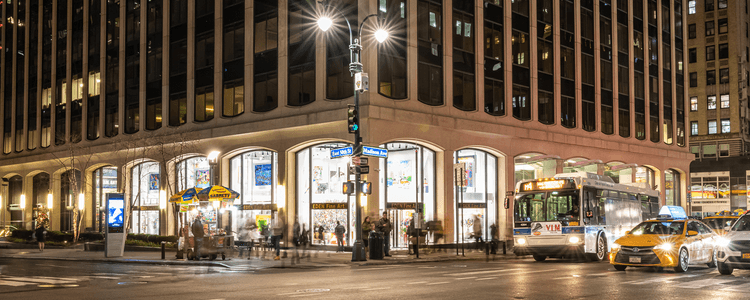Fine art through the creative eye of Jonty Hurwitz is beyond the vision of every artist preceding him. His work is the thoughtful consideration of the aesthetic as influenced by the complexities of human perception. Carefully combining the aptitude of physics with his expertise in sculpture, Hurwitz is revolutionary in blending the worlds of art and science.

Jonty Hurwitz | Art From an Angle
Updated: August 19 2020

Anamorphic Sculptures
Transformational geometry translates the abstract into the literal. Intentionally distorting an illustration and then rebuilding it in such a way that shocks the viewer when they finally discover the true image, is one of Jonty Hurwitz’s specialities. Using various sculpting methods, techniques and computer algorithms, Hurwitz combines the disciplines of both physics and sculpture.
With the help of powerful computers to cipher his billions of calculations, Hurwitz uses his formal education as an engineer as the first step in his creative process. For every one of his works, science is simply one ingredient to the completed artwork. After the initial excitement of discovering the image in the reflection of a curved mirror, or through the carefully placed peep-hole, the viewer begins to unearth the emotional element of the work. Every artwork tells a story to ignite the imagination and inspire. In Learning to Receive, the viewer may initially feel confusion when viewing what seems to resemble a moose antler, but upon closer inspection they learn that there is an outstretched hand, open and waiting.

Long Day in Pretoria Green Frog is a depiction of Hurwitz’s childhood in South Africa. Endangered by a fungus that is threatening the existence of all amphibians around the world, this singular frog is representative of a whole generation of frogs that may soon cease to exist. These frogs inspired a young Hurwitz just as the sculpture intends to inspire the current young generation.

“Artists now have the responsibility to communicate with the emotional content and emotional state of the time and in order to do that it has to engage with modern science and technology.” – Jonty Hurwitz
The World’s Smallest Sculpture

Pioneering a new sculptural technique in the field of nanoart, Hurwitz successfully created the world’s smallest sculptures, the most famous of his wife, Yifat. The nano sculpture was created using 3D printing technology and a technique called multiphoton lithography, which works to create super-small features within a photosensitive material. Measuring only 80 by 100 by 20 microns, the piece is not only the world’s smallest work of art, but the world’s smallest human creation, tiny enough to stand on a strand of human hair, and invisible to the naked eye.
Of this revolutionary creative technique, Hurwitz was quoted as saying, “The nano works represent more than just a feat of science…They represent the moment in history that we ourselves are able to create a full human form at the same scale as the sperm that creates us in order to facilitate the creation.”


By challenging both point of reference and the human capacity for invention, these sculptures subvert preconceived notions of what it means to create something unprecedented.
A Unique Angle

Each one of Hurwitz’s artworks narrates the emotion of joining science and art together, as opposed to juxtaposing them as we are so used to seeing. The science is the relationship of the artwork to the physical world, while the art is the emotion, the narrative and the story.
What Do You Believe quite literally speaks to the viewer, questioning them. Is seeing believing? Do you always trust your senses? From straight on you see abstract expressionism, something that can be translated as any thing or emotion. However, analyze the artwork further and your eye will be directed to what looks like a floating ring on the side. If you were to look through this ring, the artwork suddenly transforms. So now what do you believe? Is seeing believing, What Do You Believe?
Jonty Hurwitz

“Artists and scientists should come together, and it’s togetherness which will bring the empathy needed for us to navigate the ethical complexities of our time.” – Jonty Hurwitz

Carefully combining the art of physics with the science of art, Hurwitz’s contemporary sculptures are the pinnacle of modern technology. The art of now. We live in a complex technological time where science progresses at an accelerated rate and the arts must keep pace with it. This form of art could not have been created at any other time in history. This is the art of now, a moment of transformation in human history.
Explore the scientific world of Jonty Hurwitz through his collection of fine art here.
RELATED ARTICLES

EDEN
Updated: October 25, 2025Inside the Minds of EDEN Art Collectors
The Collectors Behind the Canvas offers an intimate look into the lives of EDEN collectors around the world. From Abu Dhabi to Dubai, discover how Dan and Nadia Feldman and Yann and Lana Biojau live surrounded by color, creativity, and meaning—revealing ...

EDEN
Updated: October 25, 2025How to Buy Art from EDEN
How to Buy Art from EDEN is your step-by-step guide to collecting art with confidence and joy. From discovering artists online to receiving personalized consultation and seamless delivery, EDEN transforms buying art into a meaningful, guided experience ...

EDEN
Updated: October 14, 2025EDEN Gallery Madison – A Chapter Closed, A Spirit That Lives On
EDEN Art Gallery Madison opened in 2009 at 437 Madison Avenue, NYC, and remained active until 2025. Although EDEN Madison closed, its influence continues through our larger galleries in SoHo and on Fifth Avenue. The EDEN Madison story is one of growth, ...
Join Our
Stay updated with the latest from the EDEN House of Art—be the first to discover new events, collections, and more!
